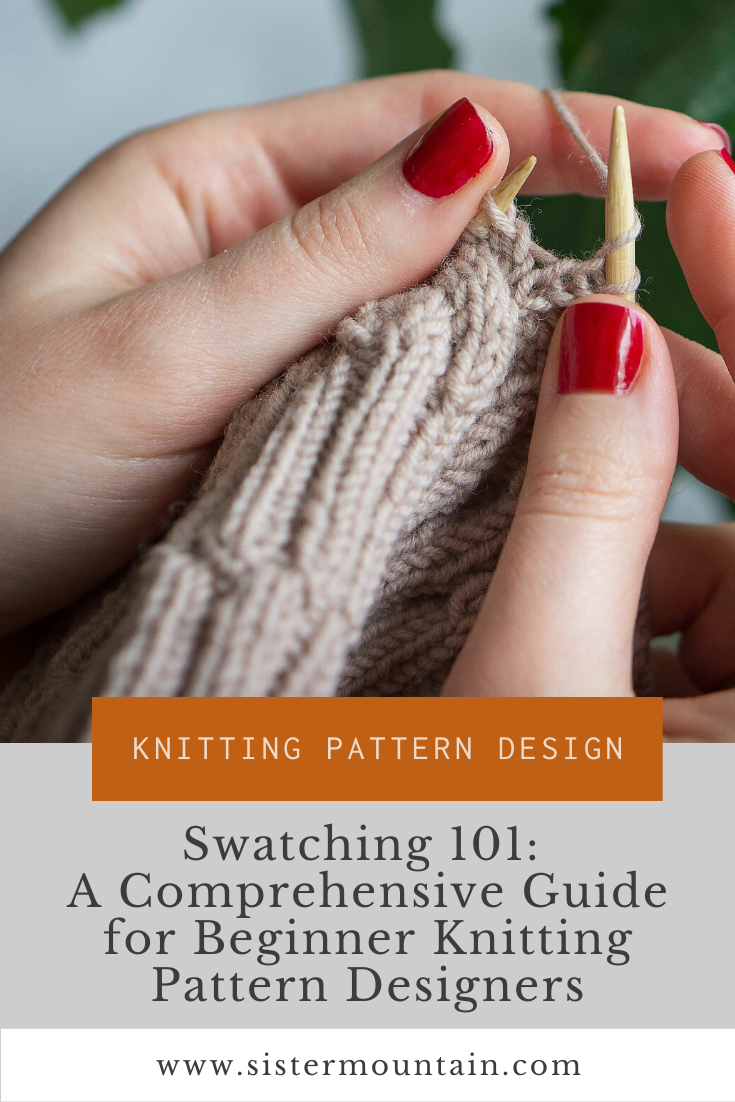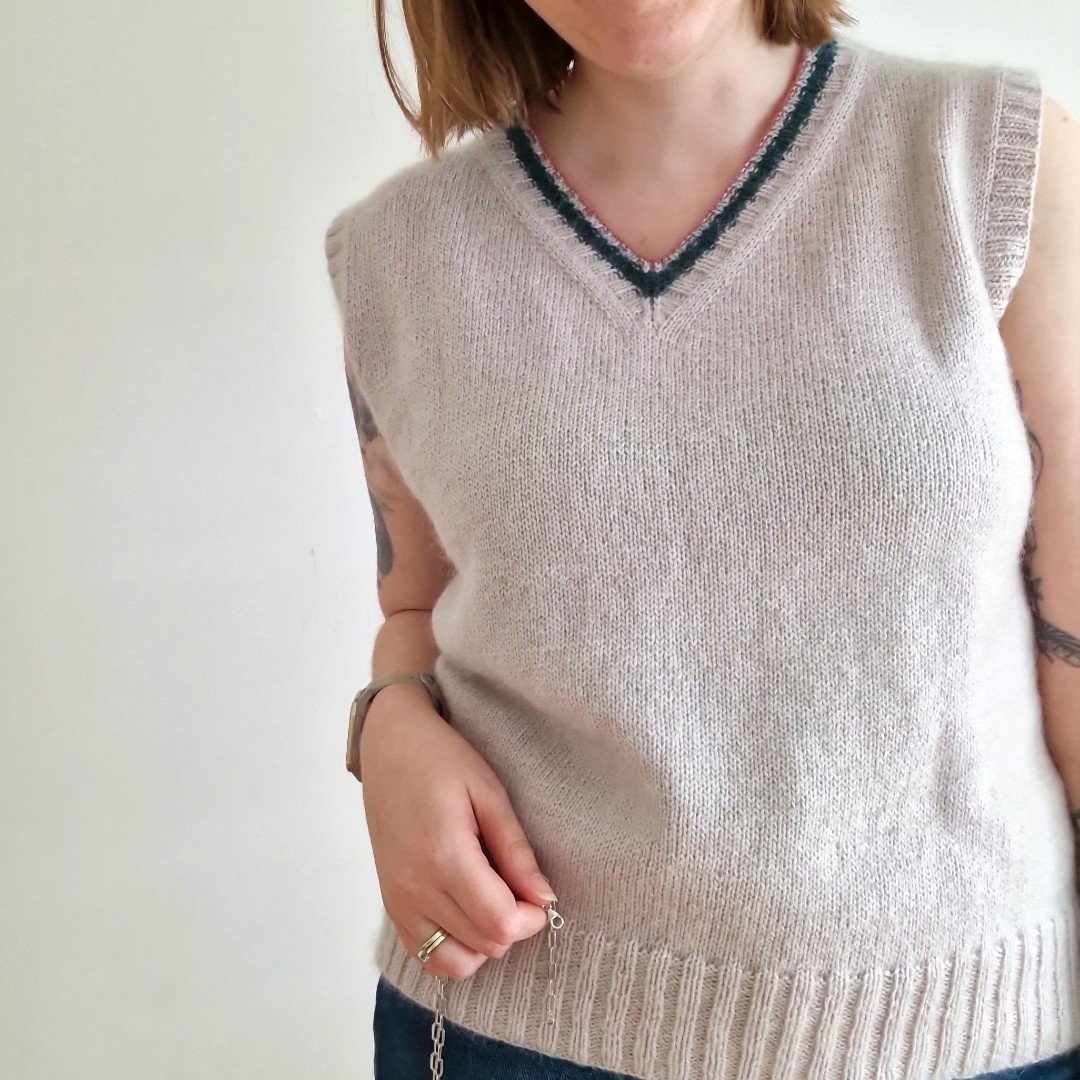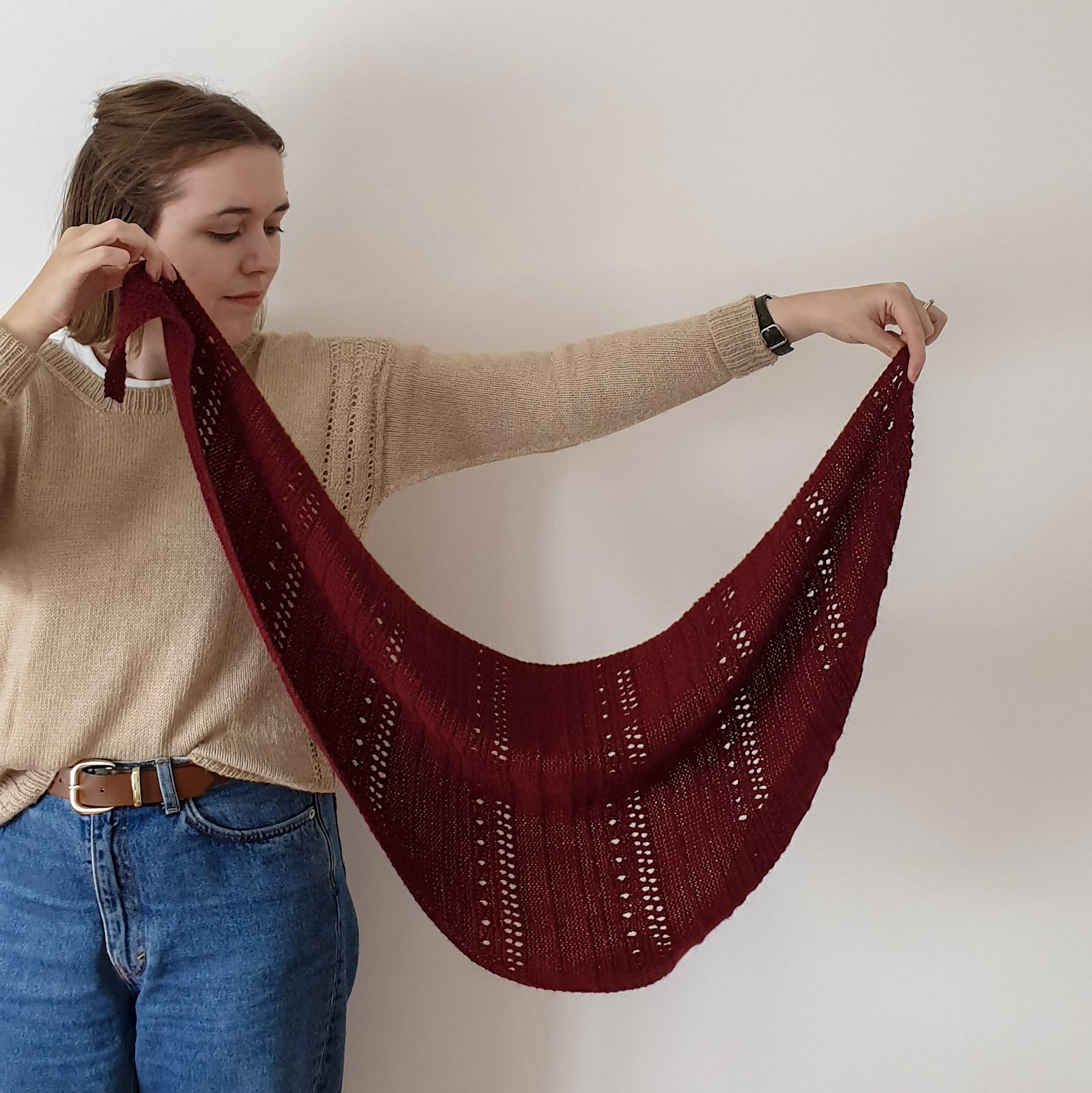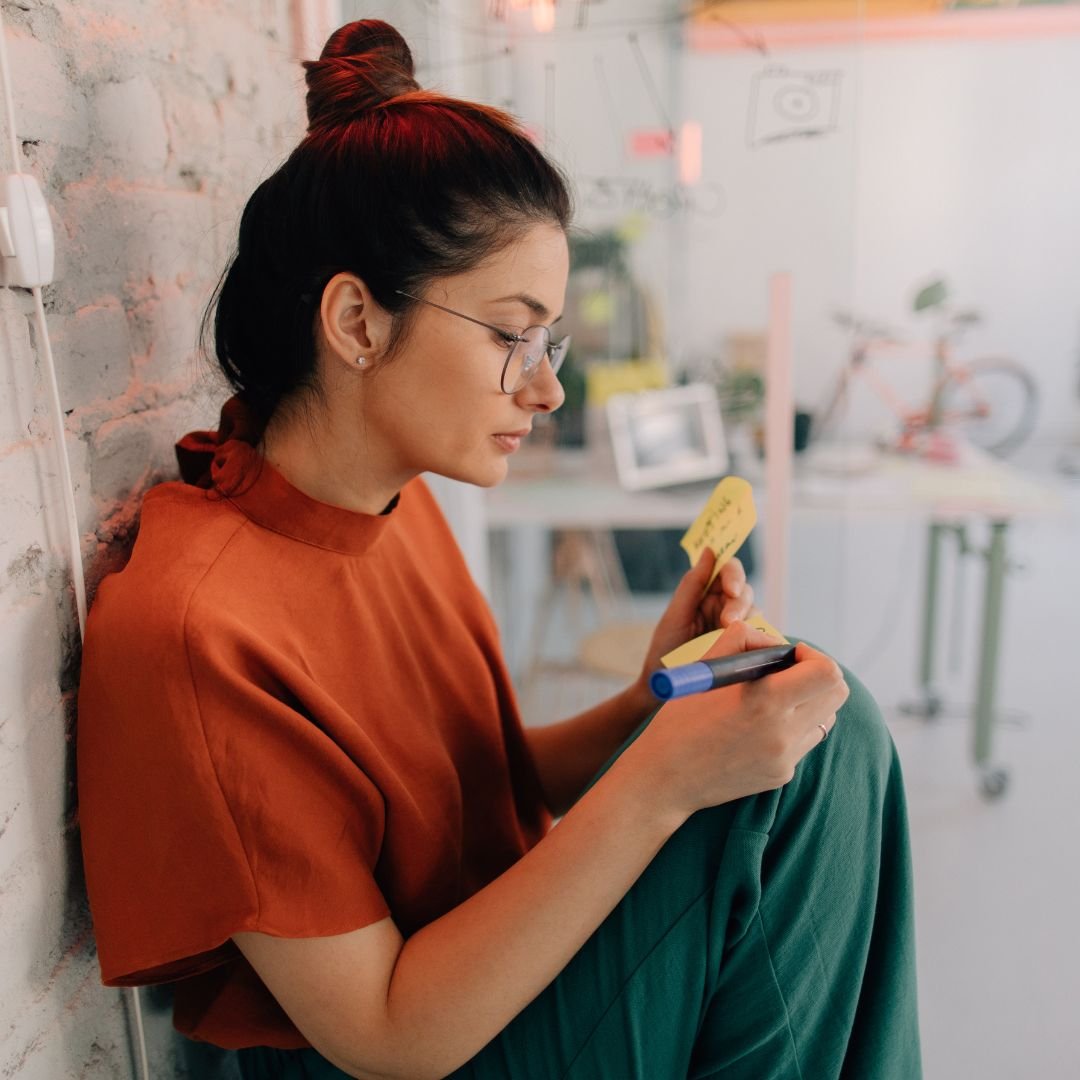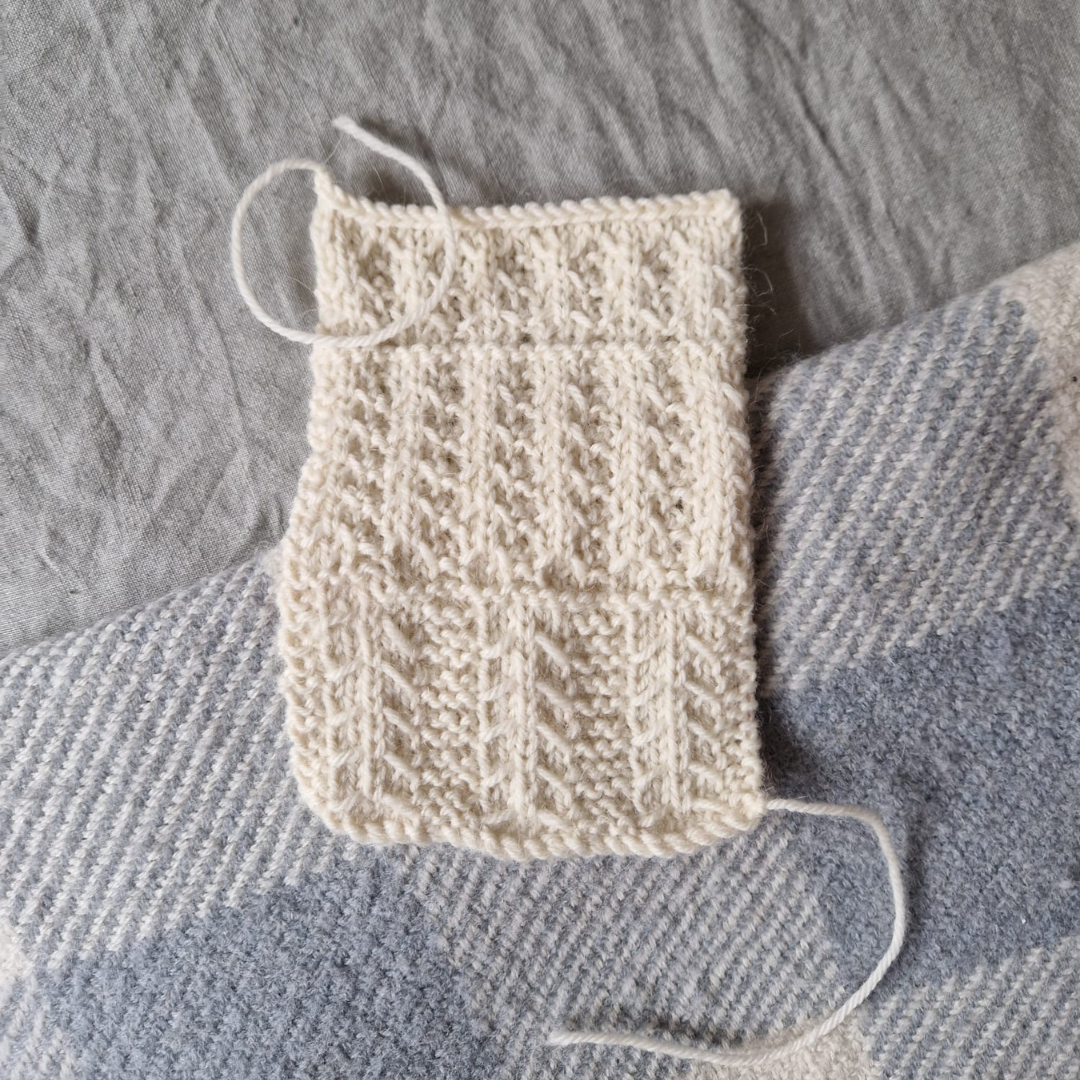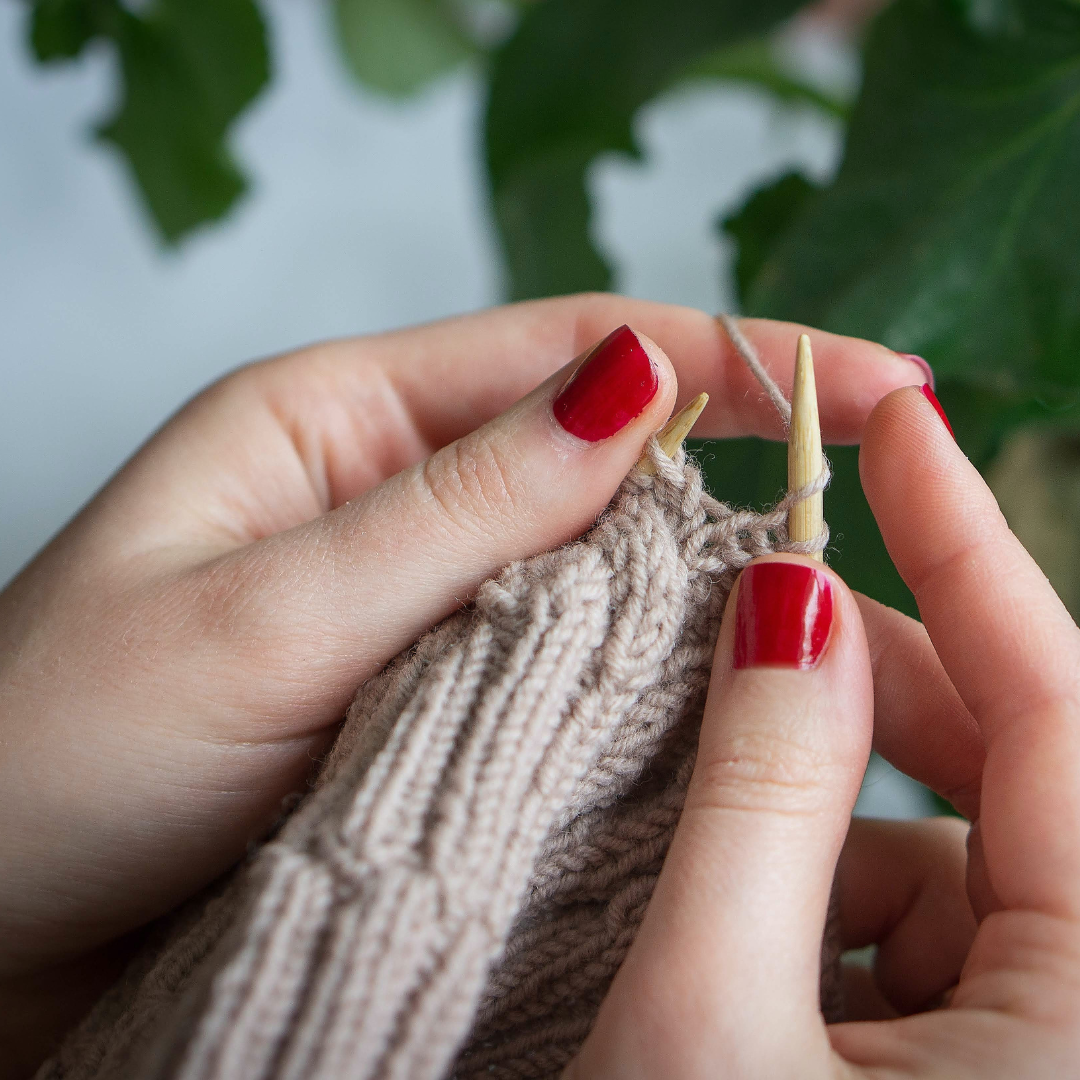Swatching 101: A Comprehensive Guide for Beginner Knitting Pattern Designers
Image description: Someone sat next to a basket of yarn, whilst knitting a bulky swatch in rust coloured yarn.
It's every aspiring knitting pattern designer's nightmare.
After investing countless hours in a new design, you're faced with the disheartening reality that the finished piece falls short of your original vision. The fit is off, the stitch pattern doesn’t look right, and the construction just isn’t working. Frustration quickly sets in, and it's tempting to throw in the towel and abandon the design completely!
I experienced this myself when I was first learning how to design knitting patterns over ten years ago.
I bought some rather expensive tweed yarn and decided to design myself a jumper. I knitted a tiny little (highly inaccurate) swatch to check the gauge and quickly moved on to knitting the final piece. As you can guess, the result was a badly-fitting jumper I never wore.
While it was disheartening, it helped me to realise that I had underestimated a significant step in the knitting pattern design process: swatching.
I know, I know.
Swatching is hardly groundbreaking stuff, but it’s often overlooked by new designers who see it as a waste of time. They knit the smallest swatch they can get away with and skip to the good bit.
Yet, swatching plays a vital role in knitting pattern design. Thorough swatching is the key to creating patterns that not only look good but fit well, bringing your creative vision to life.
In this blog post, we'll explore the importance of in-depth swatching by breaking down its many practical advantages and illustrating how it can help you refine your design skills, one stitch at a time. In doing so, you'll overcome design challenges, gain confidence, and develop a better relationship with your creative vision. Doesn’t that sound great?
So, if you’re ready to experience the benefits of thorough swatching and grow as a knitting pattern designer in the process, let's get started.
Image description: A group of women sitting around a table knitting with the text "Swatching 101: A Comprehensive Guide for Beginner Knitting Pattern Designers" on top.
Reframing Swatching
Contrary to how it may occasionally feel, swatching serves a purpose beyond merely being a warm-up exercise. It's an essential practice that helps you to make your design vision a reality.
By embracing meticulous swatching, you'll uncover a deeper understanding of how your yarn, needles, stitch pattern and construction work together, helping you create well-fitting, beautiful, and thoughtful designs. This attention to detail is what sets new designers apart and increases the likelihood that fellow knitters will love your patterns.
For example, consider designing a shawl with a textured stitch pattern. Before swatching, you might think that the yarn and needle size you picked will give you the results you want. But once you finish your swatch, you might find that the fabric’s texture isn't as striking as you'd hoped or the drape isn't right.
This crucial information will help you tweak your design by changing the yarn, needle size or stitch, leading to a more successful final piece.
Reprioritise swatching in your design process by:
Setting aside enough time for thorough swatching when planning your next design.
Experiment with different yarns, needle sizes, and stitch patterns, and observe how these variables impact the final fabric.
Use swatching as a chance to refine your ideas and troubleshoot elements in the final design. Swatches don’t have to be square, don’t you know?
Image description: A close-up of hands with red-painted nails knitting a swatch with beige-coloured yarn. The text says, Swatching 101: A Comprehensive Guide for Beginner Knitting Pattern Designers
What makes a good swatch?
Most new knitting pattern designers do swatch, to a certain extent, but fail to do the in-depth swatching that will really benefit their design. So, what makes a really good swatch?
Materials: Once you are no longer experimenting and have settled on your final design, it's crucial to swatch with the yarn that will be used in the final piece and the needle size specified in your pattern.
Size: To create an accurate gauge swatch, cast on a size of at least 6-8 inches square. This will provide a more precise gauge reading and will give you a better understanding of how the final design will look and feel when it’s knitted up.
Aftercare: It's important to wash or block the swatch in the way the final piece will be, so you can see how the yarn and stitch pattern will behave after blocking. The gauge and handle can change quite a bit!
Quantity: If you use more than one stitch pattern in your design, you must make more than one swatch.
Following these guidelines will help you to create a more accurate swatch that visually represents your final design. As a result, you are more likely to achieve a better fit and result in the finished sample, so it’s well worth putting the effort in here.
5 Essential Reasons to Swatch Properly
Designing a successful knitting pattern requires more than just inspiration and creativity; it also demands precision, attention to detail, and a deep understanding of your materials. Detailed swatching is a big step towards achieving that.
Here are five reasons why detailed swatching is essential for knitting pattern designers:
1. Swatching ensures accurate sizing and fit
Swatching helps you decide on your final gauge, which is vital for calculating your pattern numbers and, as a result, ensures your finished design will fit as intended. Knit several swatches, each at different gauges, and decide which fabric you prefer for your intended design. Then, use that fabric’s gauge in your final pattern.
Image description: Close-up of hands knitting a pale-blue swatch.
2. Swatching helps you thoughtfully select your yarn and needles
Different yarns and needles can significantly impact the appearance and handle of your finished design. Swatching allows you to experiment with various combinations and select the one that best suits your design. Try multiple yarn and needle pairings to find the perfect match for your design before you move forward with it.
3. Swatching allows you to experiment
Before committing to a stitch pattern or design element, test them out in a swatch. This will enable you to see how they interact with your chosen yarn, ensuring that your finished project will be as beautiful as you envisioned. Use swatches to test any stitch patterns, colourwork, or other design elements you're considering for your project - the more, the merrier!
4. Swatching gives you insights into yarn behaviour
Swatching can reveal valuable information about how your chosen yarn behaves, such as its tendency to stretch, drape, or bias. Knowing these characteristics can help you make informed decisions about your design and ensure a successful result.
5. Swatching minimises trial and error in the design process
By swatching, you can catch potential issues with your design and make adjustments before writing your pattern or knitting your final sample. This saves time, energy, and frustration by reducing the likelihood of having to frog and restart your sample. Use your swatch as a blueprint to troubleshoot potential issues, test out new ideas and make necessary changes before starting your project.
Conclusion: Swatching 101
Swatching is an invaluable step in the knitting pattern design process, providing essential insights into the gauge, yarn behaviour, stitch patterns, and more. Taking the time for detailed swatching can make all the difference in ensuring your final design not only looks good and fits well, but the pattern is also much easier to write.
Now, it's time to put your newfound swatching knowledge into action! Start swatching for your next design, and remember to share your experiences, insights, and any tips you've picked up along the way in the comments. We're all in this together, learning and growing as designers.
What's your favourite part of the swatching process? Share your thoughts and join the conversation below!


